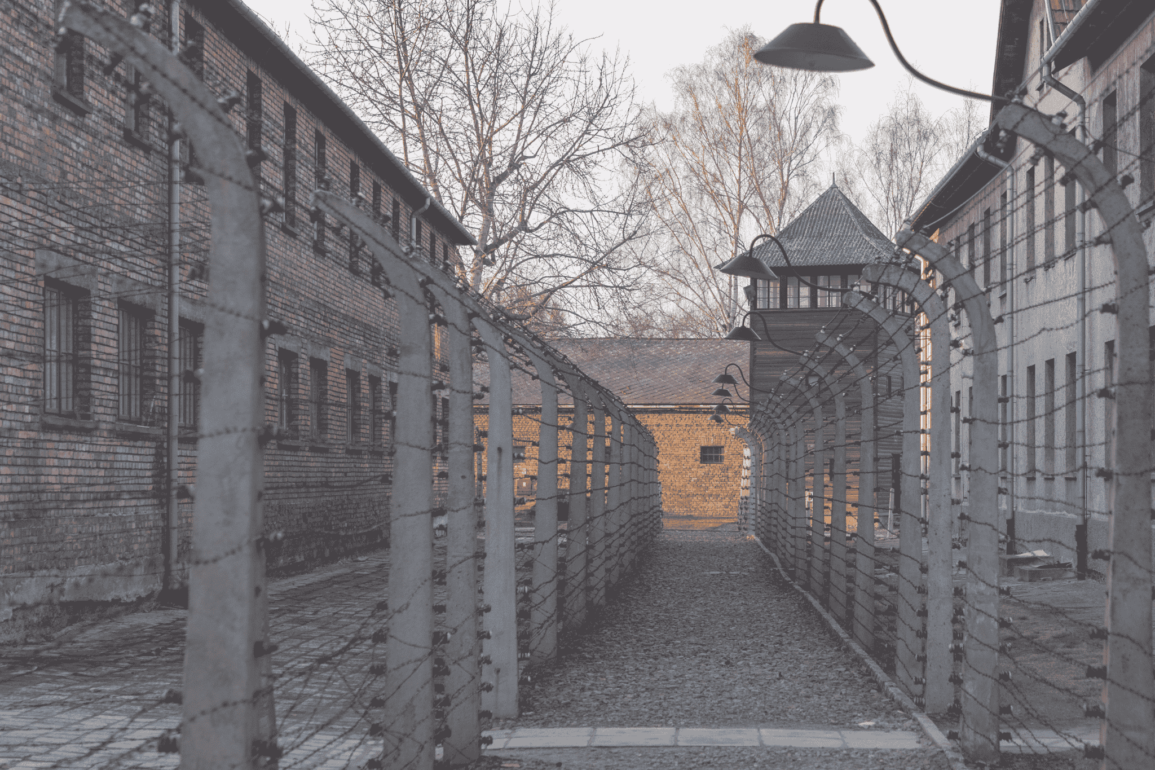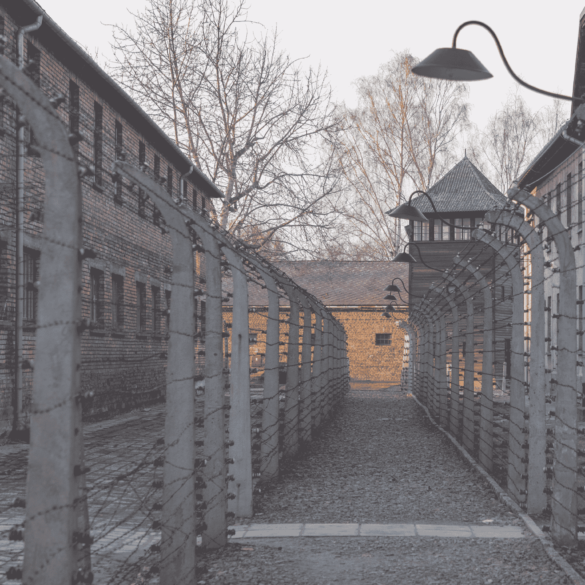Planning a trip to Krakow? While researching your visit, you’ll frequently come across tours or recommendations to visit Auschwitz-Birkenau. Everyone knows the impact this place had on history, so I won’t insist that it’s a must-do; each person must consider whether they’re ready for such an emotional visit.
Below, I explain more about why it’s meaningful and how to organize your visit in detail.
Why visit Auschwitz-Birkenau from Krakow?
Visiting Auschwitz-Birkenau is more than just a day trip from Krakow; it’s an opportunity to confront one of the darkest chapters in human history. The Auschwitz concentration camp, located in Oświęcim, Poland, stands as a haunting symbol of the Holocaust and Nazi extermination efforts during World War II. The memorial and museum at Auschwitz-Birkenau offer a sobering insight into the atrocities committed and serve as a powerful reminder of the importance of remembering the past to prevent future tragedies.
While touring Krakow, it’s hard to avoid the topic of the war. Although the city itself was not destroyed like Warsaw, the Nazi occupation had a profound, multi-generational impact on the local society. Besides Auschwitz, reminders of those times can be found at the Galicia Museum in the once Jewish district of Kazimierz, the Heroes of the Ghetto Square, the famous Schindler’s Factory, and in many, many other places, exhibitions, and the still living history of the city.
The camp complex comprises Auschwitz I and Auschwitz II-Birkenau, the largest of the Nazi concentration and extermination camps. Over 1.1 million people lost their lives here, making it a significant site for understanding the impact of the Holocaust. A visit to Auschwitz from Krakow allows you to pay your respects, learn about the history of Auschwitz, and reflect on the consequences of hatred and intolerance.
How to Get from Krakow to Auschwitz?
Oświęcim is located approximately 80 km from Krakow. Traveling from Krakow to the Auschwitz Museum is straightforward, with several options available:
Guided Tour from Krakow: This is the most convenient option. A tour from Krakow typically includes transportation, an English-speaking guide, and entry to the Auschwitz-Birkenau State Museum. The journey takes about 1.5 hours by bus, and the entire trip lasts around 7 hours.
Public Transport: You can take a bus or train from Krakow to Oświęcim. From there, local buses or taxis can take you to the Auschwitz site, or you can walk approximately 2 km. While this option may be cheaper, it requires more planning and time. Additionally, since many others are also traveling to Auschwitz, especially during the high season, securing a seat on the bus or train may be challenging. Check your return schedule carefully to avoid surprises and consider traffic congestion—Krakow and the access roads can be heavily congested. The museum requires you to arrive at least 30 minutes before your scheduled visit, so avoid planning to arrive “just in time.” Taking a taxi from Krakow is not the best solution, as it may be more expensive than an organized tour that includes round-trip transportation with tickets already included.
Private Car: Renting a car offers flexibility, but be mindful of parking availability and costs at the memorial site. A useful tip is that after parking at the paid lot near Auschwitz I, you don’t necessarily need to drive to another paid parking area at Birkenau; you can use the museum’s shuttle bus. However, the more people who do this, the busier the parking lot becomes.
Is a Guided Tour of Auschwitz-Birkenau Worth It?
Absolutely. A guided tour enhances your understanding of the site’s historical significance. Guides provide detailed explanations about the camp’s operation, the experiences of prisoners, and the broader context of the Holocaust.
Some benefits of a guided tour include:
Flexible Visiting Hours: Choosing a guided tour gives you more options for visiting hours compared to entry without a guide, which is available only at specific times.
Educational Insight: Guides share personal stories, historical facts, and answer questions, enriching your experience. To become a guide at Auschwitz, one must undergo a rigorous course and be an active museum employee.
Efficient Use of Time: Organized tours manage the schedule, ensuring you see the most important sites with detailed explanations of their significance. Without a guide, you may miss significant exhibits, not know which buildings are accessible, or spend too much time in one area without following the most optimal route through this vast area.
Can You Visit Auschwitz Concentration Camp Independently?
Yes, you can visit Auschwitz independently, but there are considerations you must take into account:
In the museum, there are two modes of visiting: paid visiting with an educator (guide) and free self-guided visits.
Paid Visiting with a Guide (Paid Option): In contrast to a organized tour from Krakow, you must arrange your own transportation, which for some individuals may be either a challenge or simply inconvenient. Regarding the guide, according to the rules, they must be a museum employee. Thanks to these regulations established by the museum, you can be sure that you are being led by someone with the appropriate knowledge and experience. Therefore, booking an organized tour is primarily a matter of convenience and slightly greater accessibility.
Free Self-Guided Visiting (Free Option): Free visiting without a guide may seem tempting, but you need to know that tickets to the museum are worth booking online, especially during the high season. Tickets for visiting with an educator (guide) for individual visitors from the Auschwitz website disappear very quickly, and free entry passes even faster. Both options can be obtained at the ticket office, but often after a long wait, and unfortunately, the available pool is not always sufficient. Therefore, I strongly advise against attempting to obtain tickets on the day of your visit during the high tourist season, as wasting 3 hours on the journey and encountering unknown queue lengths could result in not being able to visit.
Additionally, free self-guided visiting is only possible after the time allocated for groups visiting with a guide—in different seasons, this time varies depending on the museum’s opening hours—for example, in April, May, September: from 16:00, and in December after 12:00.
If you choose to go without an educator, plan ahead and consider buying official guidebooks in the museum bookstore to aid your visit. This type of visiting may also be suitable for people who have already visited the memorial once and want to do it again to simply be there, pay their respects, but do not need additional historical knowledge.
What Will You See on an Auschwitz-Birkenau Tour?
During an Auschwitz-Birkenau tour, you’ll explore two former concentration and mass extermination camps Auschwitz and Birkenau:
Auschwitz I (Main Camp): Here, you’ll see the infamous “Arbeit Macht Frei” gate, original barracks, the gas chambers, and the crematorium. Exhibits display personal belongings of victims, photographs, and documents.
Auschwitz II-Birkenau: Witness the vast expanse of the camp, including wooden barracks, the railway tracks leading into the camp, and the remains of destroyed gas chambers.
The tour offers a profound insight into the daily lives of prisoners and the mechanisms of the Nazi extermination plan.
Combining Auschwitz and Wieliczka Salt Mine in One Day—Is It Feasible?
Combining visits to Auschwitz and the Wieliczka Salt Mine in a single day is possible but requires careful planning. Here’s what to consider:
Long Day: Both sites are extensive. Visiting both means a full day with limited downtime.
Emotional and Physical Demands: Auschwitz is emotionally heavy, while the salt mine involves physical activity, including descending many steps.
Tour Options: Some tour operators offer combined day tours, which is an interesting option if you don’t have much time but care about both places. Without your own car, it’s hard to imagine doing this using public transport.
If time permits, consider dedicating separate days to each site for a more immersive experience.
How Much Time Do You Need to Visit Auschwitz-Birkenau?
A typical visit to Auschwitz-Birkenau takes around 3.5 hours:
Auschwitz I: Approximately 2 hours.
Auschwitz II-Birkenau: About 1.5 hours.
Including travel time from Krakow, the entire day trip can take up to 7 hours with an organized tour or your own car, and a bit longer with public transport. The visit is organized in such a way that it allows sufficient time to absorb the experience without feeling rushed.
Understanding the History of Auschwitz: Why It’s Important
Understanding the history of Auschwitz is crucial for several reasons:
Honoring Victims: Acknowledging the suffering and loss of life is a form of respect.
Educational Value: Learning about the Holocaust helps prevent history from repeating itself.
Cultural Insight: It provides context to Poland’s history and the resilience of its people.
Visiting the Auschwitz-Birkenau Memorial is not just about observing historical artifacts; it’s about engaging with the past to inform a better future.
Practical Tips for Your Auschwitz Tour from Krakow
To ensure a meaningful visit, consider these tips:
Book in Advance: Secure your tour or entry tickets ahead of time, especially during peak seasons. This applies to organized tours—because it can be difficult to purchase them from the tour operator from one day to the next—and individual visiting, both paid with a guide and free entry passes.
Carry Identification: The name on the ID must match your booking details, and this is really checked, whether you are on a tour with a tour operator or booking your ticket or entry pass yourself.
Arrive Early: If you’re traveling on your own, arrive at the museum at least 30 minutes early.
Dress and Behave Appropriately: Wear respectful attire suitable for a place of mourning, and conduct yourself accordingly. It may seem shocking, but there are people who take posed photos on the tracks, joke about the victims, or light up a cigarette—I strongly caution against such behavior. You are in a place of immense tragedy and one of the largest memorial sites in the world.
Pack Light: Larger luggage is not permitted. Bags should not exceed the maximum size allowed. There is luggage storage available; don’t try to bring in items like pocket knives—you will undergo security control similar to an airport before entering.
Emotional Preparedness: Be ready for a heavy but important experience.
Age Considerations: The museum is not recommended for children under 13 years old, and even older individuals or highly sensitive people may find the visit emotionally challenging.
Guided Tours Recommended: Enhance your experience with knowledgeable guides.
How to Book a Tour to Auschwitz-Birkenau Memorial and Museum
Booking a tour to Auschwitz is simple:
- Online Bookings: Book your museum tickets online in advance. If you’re traveling by public transport, it’s also advisable to purchase your transportation tickets ahead of time, as many people are heading there.
Tour Operators: Choose companies offering an Auschwitz Birkenau tour from Krakow, which will ensure you convenience and lack of stress. Often, such tours offer additional conveniences like hotel pick-up, lunch, the care of an English speaking tour leader, and you don’t have to worry about anything except showing up at the meeting point.
Conclusion
Visiting Auschwitz-Birkenau on a day trip from Krakow is a profound experience that offers invaluable insights into human history. It’s an opportunity to honor the victims, reflect on the past, and contribute to a future where such atrocities are never repeated. Make the most of your stay in Krakow by including this significant visit to Auschwitz in your itinerary.
This post was written by Magdalena Mikulska.




